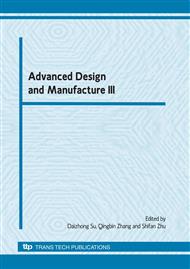p.413
p.417
p.421
p.425
p.429
p.433
p.437
p.441
p.445
Crack FEA of the First Stage Blade of Gas Turbines
Abstract:
To investigate the physical cause of premature blade cracking during the acceleration mission test (AMT) in a test cell environment, an in-depth finite element analysis (FEA) of the blade was conducted using a life prediction system. The results obtained showed that the blades had suffered excessive airfoil creep damage, leading to excessive blade lengthening and airfoil untwisting particularly in the trailing edge region. It is predicted that the uneven rubbing action might have contributed to the fatigue crack nucleation and growth process just below the platform in the shank region of the blade under AMT fatigue cycling conditions, and the excessive creep deformation made a significant effect on the overall crack nucleation process.
Info:
Periodical:
Pages:
429-432
Citation:
Online since:
November 2010
Authors:
Price:
Сopyright:
© 2011 Trans Tech Publications Ltd. All Rights Reserved
Share:
Citation:


